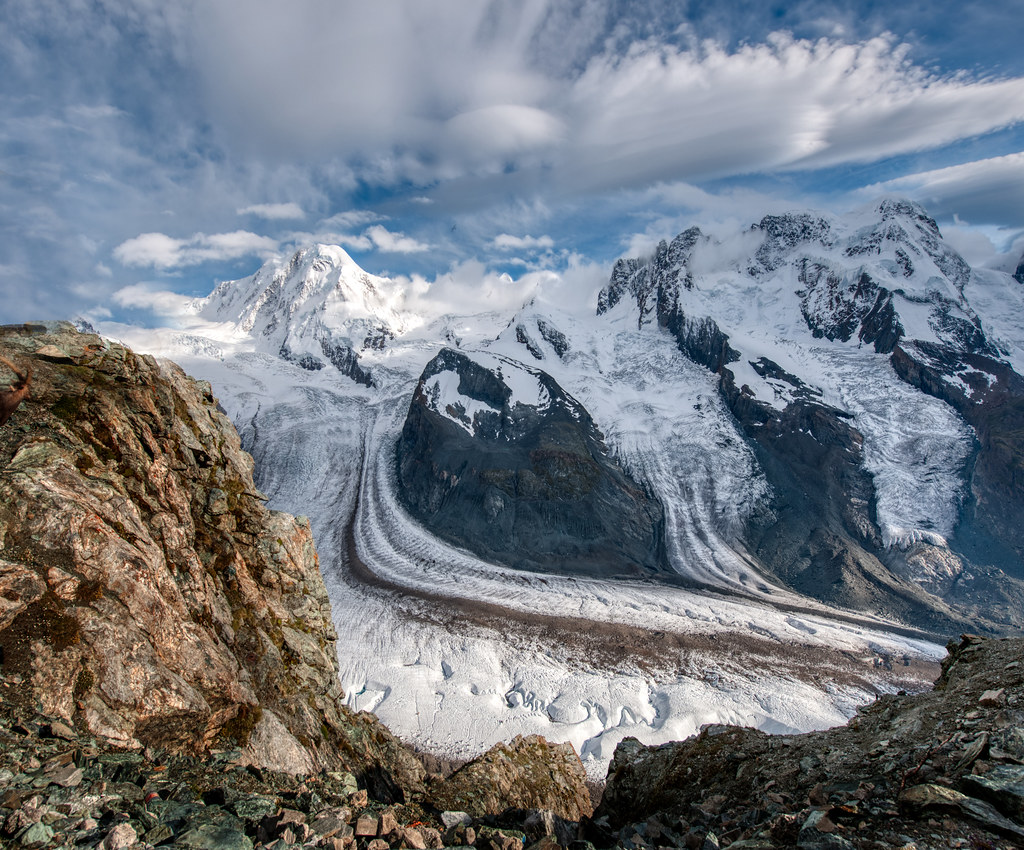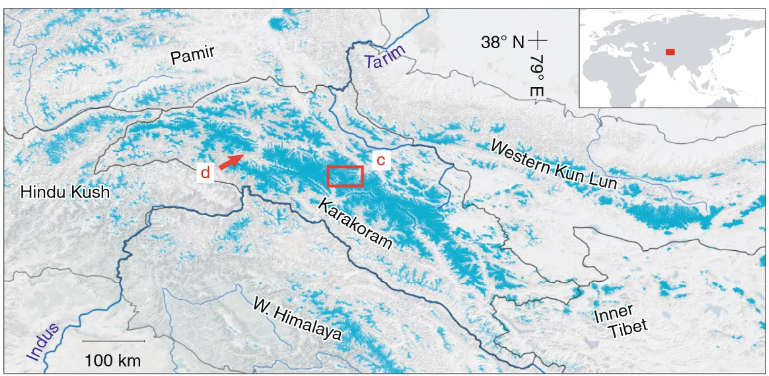The Karakoram Anomaly or How some glaciers just won’t quit

Everyone and their granny knows that globally glaciers are retreating. However, there is one region where the opposite is true. The Karakoram mountain range spans the borders of Pakistan, India, and China.

Our best estimates suggest that the area is home to almost 14,000 glaciers and more than 2,200 km³ of ice-covered area. These Karakoram glaciers mostly start above 7,000 m a.s.l. (above sea level) and very few descend lower 2,300 m a.s.l. They stand out from other mountainous glaciers due to their very steep gradients, accumulation patterns and heavy debris cover. We have a poor understanding of the processes at work here as records have not been maintained for the region and it is a relatively fresh area of study. These behaviours were termed the Karakoram Anomaly by Kenneth Hewitt in the mid-2000s.
13 glaciers (10 to 20 km long), advanced between 1997 and 2002, and 9 larger glaciers (40 to 70 km in length) were observed to experience 5 to 15 m of thickening spread over large ablation zones. More than half of these also began building lateral moraines once more, with thicker ice overtopping moraines that had previously been uncovered by ice for more than half a century. The region has an abnormally high rate of glacier surges, with at least 6 confirmed surges and a further 3 potential surges in a single decade (1986 to 1996).
The reasons for this behaviour are still not yet fully understood. But we do now know that the anomaly itself does not seem to affect the entire region, rather it is focused on the central and eastern parts of the mountain range, specifically near the Western Kun Lun.
Additionally, glaciers in the region were retreating from the 1940s through to the 1960s from the few field reports available. We assume that this trend continued until a sustained reversal was observed in the early 1990s. Where a series of marginal advances were recorded in a trend which has been maintained through to the present.
It is believed that a combination of orographic controls on the glaciers morphology (they have very thin trunks, and are surrounded on either side by steep mountains), a localised enhancement of precipitation, and a year-round accumulation regime all serve to limit the effects of warming. Between 60 and 80% of total ice area for these glaciers sits between 3800m and 5800m a.s.l. meaning that conditions are ideal for sustained glacier growth.

Furthermore, in the latter end of the 20th century the Karakoram experienced the lowest summer temperatures on record. At the same time the region saw significant increases to precipitation in winter, summer, and autumn months. These factors combined have served as a buffer between the glaciers in the eastern Karakoram and the forcings which have caused the mass balance loss and equilibrium line retreat observed in all other mountainous glaciated regions.
The finer details driving this behaviour are still being studied however we believe that the abnormally high rate of surging these glaciers experience suggests something unusual about their morphology which may hold the key to explaining the Karakoram Anomaly.
Research in this area is not common, and there have been very few papers published discussing these effects. However, the prevailing belief is that the anomaly will be short lived so we are running out of time to study the few mountainous glaciers in the world which are not retreating. These glaciers offer us an insight into a set of dynamics that we have not seen anywhere else and that alone is a reason to study them but the draw of glaciers for me has always been their majesty, their otherworldliness and it won’t be long before they truly are of another world. A world which we will not see again for millions of years.
Bibliography
Dimri, A.P., 2021. Decoding the Karakoram anomaly. Science of The Total Environment, 788, p.147864.
Farinotti, D., Immerzeel, W.W., de Kok, R.J., Quincey, D.J. and Dehecq, A., 2020. Manifestations and mechanisms of the Karakoram glacier Anomaly. Nature Geoscience, 13(1), pp.8-16.
Hewitt, K., 2005. The Karakoram anomaly? Glacier expansion and the ‘elevation effect,’Karakoram Himalaya. Mountain Research and Development, 25(4), pp.332-340.
(mountain glacier by Trey Ratcliffe licensed under CC BY-NC-SA 2.0)




Recent comments